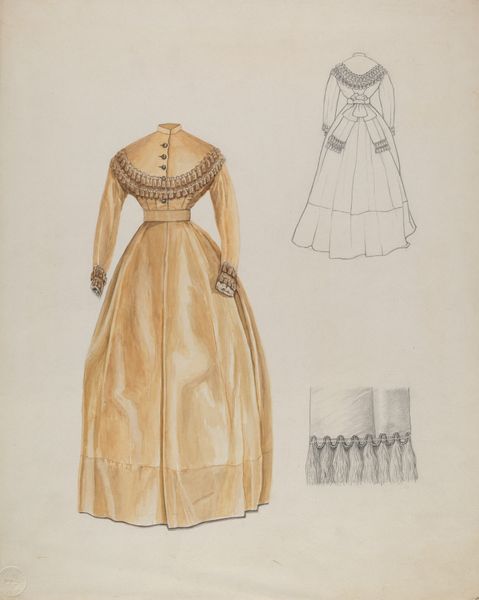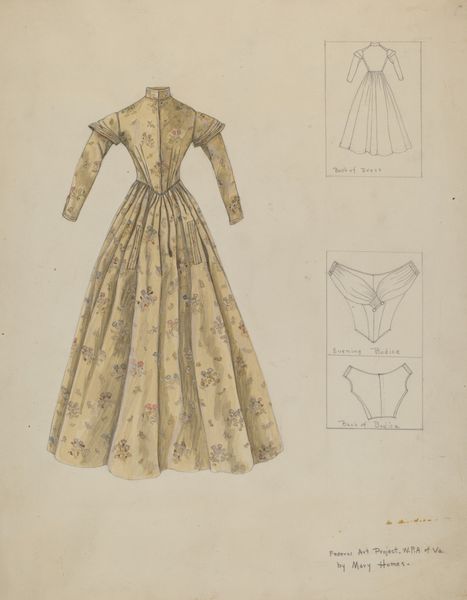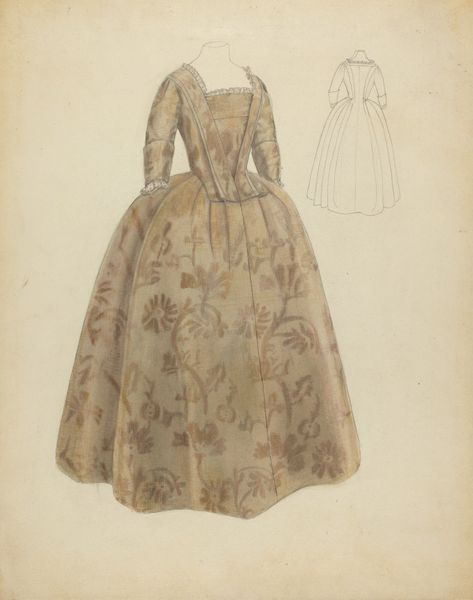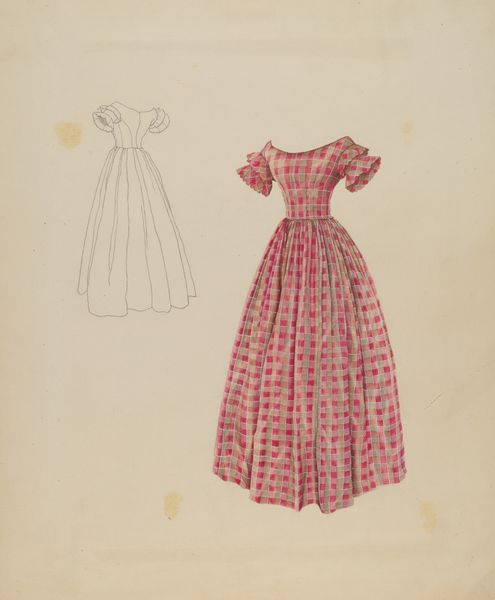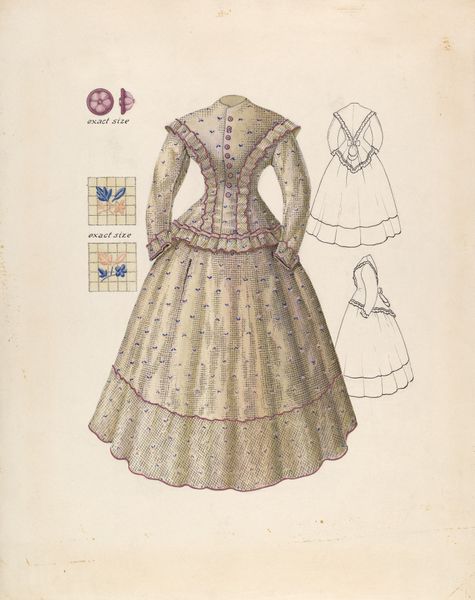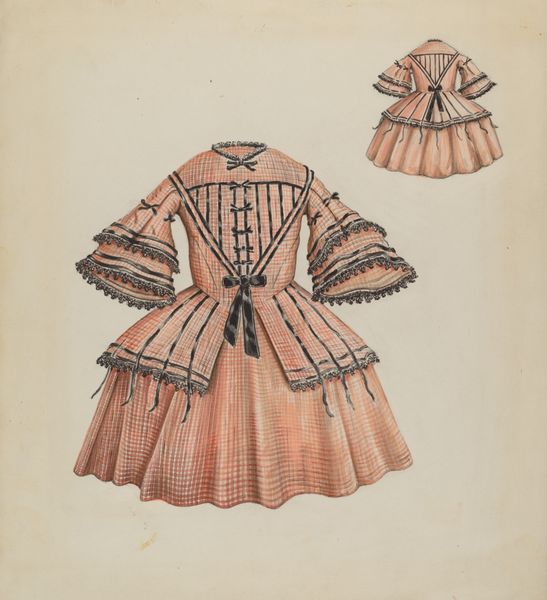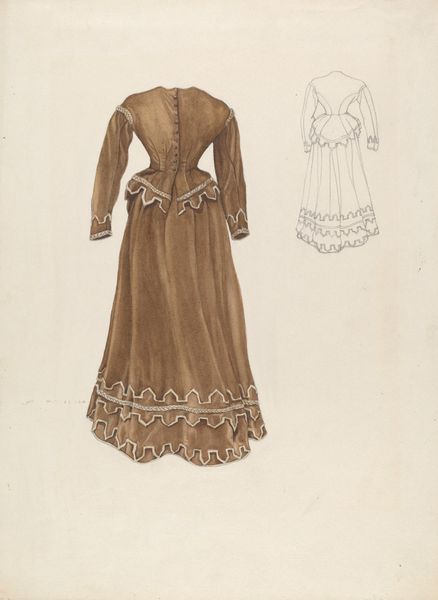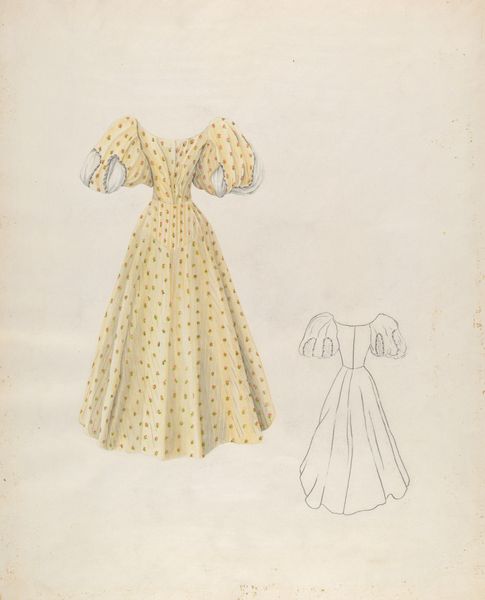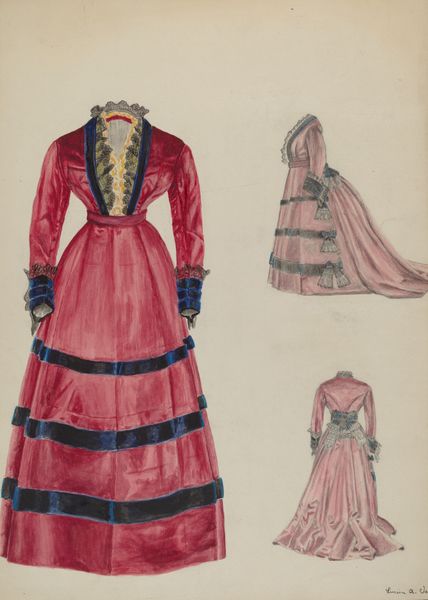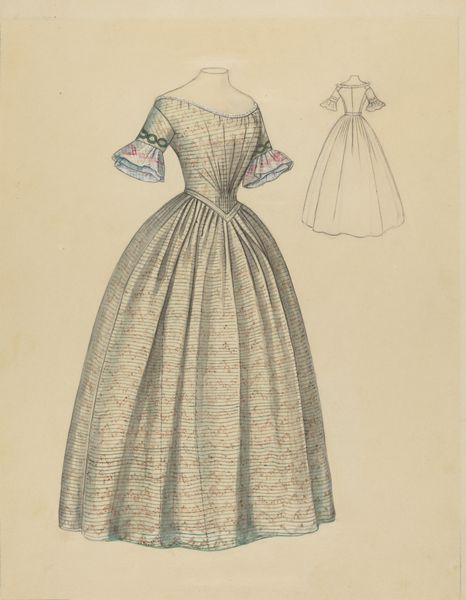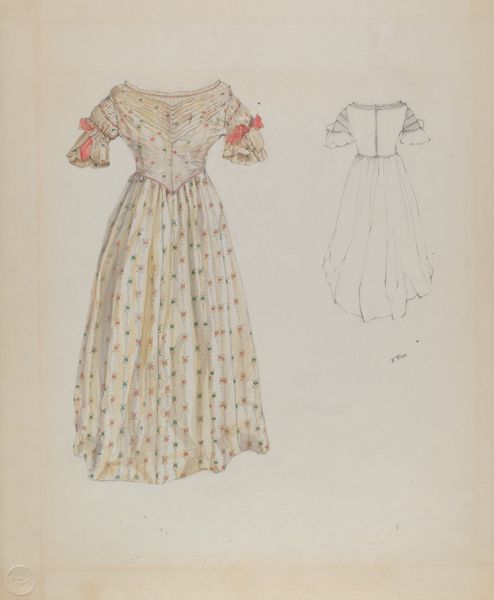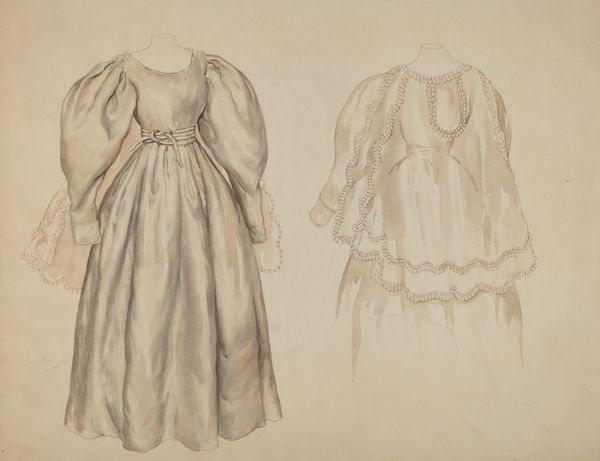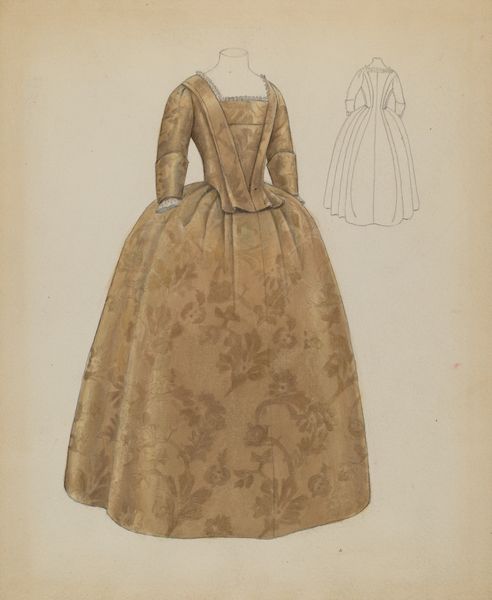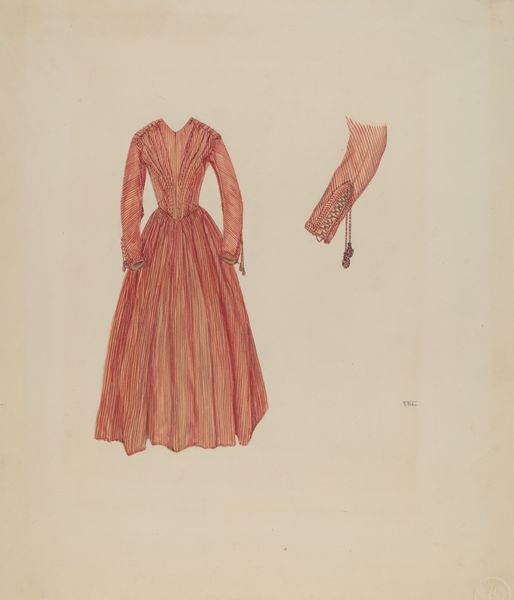
drawing
#
fashion design
#
drawing
#
toned paper
#
light pencil work
#
quirky sketch
#
fashion and textile design
#
historical fashion
#
watercolour illustration
#
fashion sketch
#
watercolor
#
ethnic design
Dimensions: overall: 30 x 31.6 cm (11 13/16 x 12 7/16 in.)
Copyright: National Gallery of Art: CC0 1.0
Editor: Here we have "Dress," a watercolor and light pencil work. It presents a dress design in a charmingly old-fashioned style. I’m struck by its delicate lines and what feels like a very personal touch. What symbols or historical contexts do you see emerging from this piece? Curator: This image evokes echoes of historical fashion plates, hinting at eras when clothing was imbued with very specific social meanings. The floral patterns, combined with the jacket's almost military-like rows of buttons, create a fascinating tension. Think of flowers symbolizing femininity or fleeting beauty against a rigid structure suggesting power or status. What does that juxtaposition tell us? Editor: So, is it the combination of those opposing visual cues—the flowers and those regimented buttons—that really speaks to the social encoding of garments? Curator: Precisely. It makes one consider the roles women occupied. The watercolor technique also lends a certain softness, perhaps masking, or perhaps softening the overt codes. Can art truly neutralize societal symbolism, or merely comment on it? Editor: That's interesting! The idea that technique can almost mediate those strong symbolic forms. Are there other symbols that jump out at you in terms of women's roles? Curator: Look at the skirt's voluminous shape; often, dress silhouettes physically defined a woman's space. Consider also the colors used; light pastels often denoted innocence or purity during specific periods. It becomes a coded visual language. Editor: It’s fascinating to think how something as simple as a dress could act as a kind of cultural transmitter. Thanks so much for the insight. Curator: Indeed. Garments aren't mere fabric, but layers of encoded meanings from many pasts. Always consider: what narratives are being woven?
Comments
No comments
Be the first to comment and join the conversation on the ultimate creative platform.
